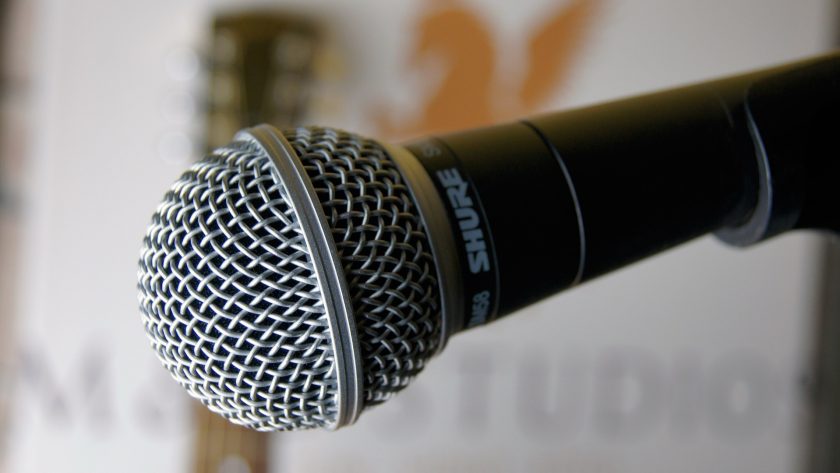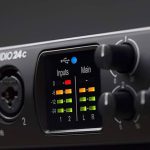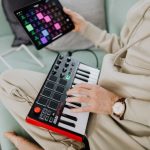In this guide we feature the best microphones for recording vocals at home. If you are planning on recording your voice at home (either for singing or for podcasting), I generally recommend going with dynamic mics like the tried and tested Shure SM58-LC microphones. This is because when you record at home, you are bound to encounter a lot of background noise and sounds such as:
- The sound of cars or construction nearby
- The sound of people in the house or apartment
- The interior sounds of your room such as the fan, air conditioning, etc.
- The footsteps of people walking around or above you (if you live in an apartment)
Most of the time these noises can make their way into your recording and dampening your audio quality if your room does not have proper acoustic treatment (refer to our full guide on acoustic treatment here). Most of the time, acoustic treatment would not be possible if you live in a small apartment or building complex, which means that you will generally need to get a dynamic microphone with a cardioid pickup pattern to reduce background sounds and pickup (see our guide on microphone types and polar patterns). Dynamic mics can handle louder sounds but sound less engaging than a condenser mic, however, unless you plan to sing and record very high quality audio at home, I would generally go for a dynamic microphone especially if you are a beginner just starting out with home studio recording.
#1 Shure SM58-LC Dynamic Microphone
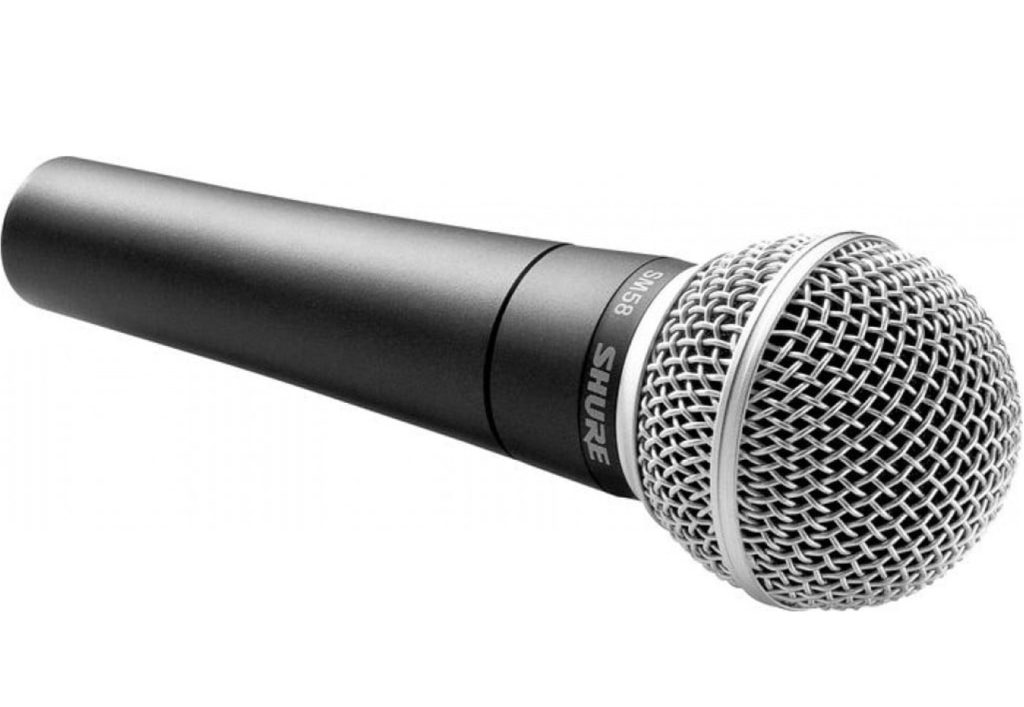
Long considered the staple microphone for home recording…
The Shure SM58-LC Cardioid Dynamic Vocal Microphone is a reliable choice for vocal recording particularly in a home studio setting. This microphone is equipped with a cardioid pickup pattern, ideal for isolating the main sound source and minimizing background noise. Its frequency response ranges from 50Hz to 15kHz, which is tailored to enhance vocal clarity and reduce low-frequency rumble. This makes it effective for a wide range of vocal types and styles and you can record without picking up a lot of background noise at home.
When it comes to sound performance, the SM58-LC delivers consistent sound quality with a brightened midrange that brings clarity and presence to vocals. This quality is complemented by an internal pneumatic shock mount system that reduces handling noise, an essential feature for dynamic performance situations. Furthermore, the microphone includes a built-in wind and pop filter, which efficiently mitigates plosive and breath sounds, ensuring clear and uninterrupted vocal reproduction.
One question that I often get is whether you should get the Shure SM58-LC or its close counterpart the Shure SM57 microphone. While both microphones are dynamic and excel in absorbing surrounding noise with minimal interference, they have different polar patterns and use cases. The SM57 is ideal for instrument pickup, while the SM58 is primarily designed for recording vocals and can better capture nuances in voice performances clearly and evenly. Unless you plan to record instruments at home (such as guitar or piano), I recommend going with the Shure SM58-LCs.
Overall, the SM58-LC is probably the best home recording dynamic microphone due to its durability, reliability, and sound quality. Its robust construction can withstand the rigors of frequent use making it a long-term investment for home studios. The microphone’s sound characteristics are well-suited for a variety of vocal styles, making it a versatile tool for different recording needs. It also sounds great and feels warm and very dynamic especially for louder vocals.
#2 FIFINE Amplitank K688 Dynamic Microphone
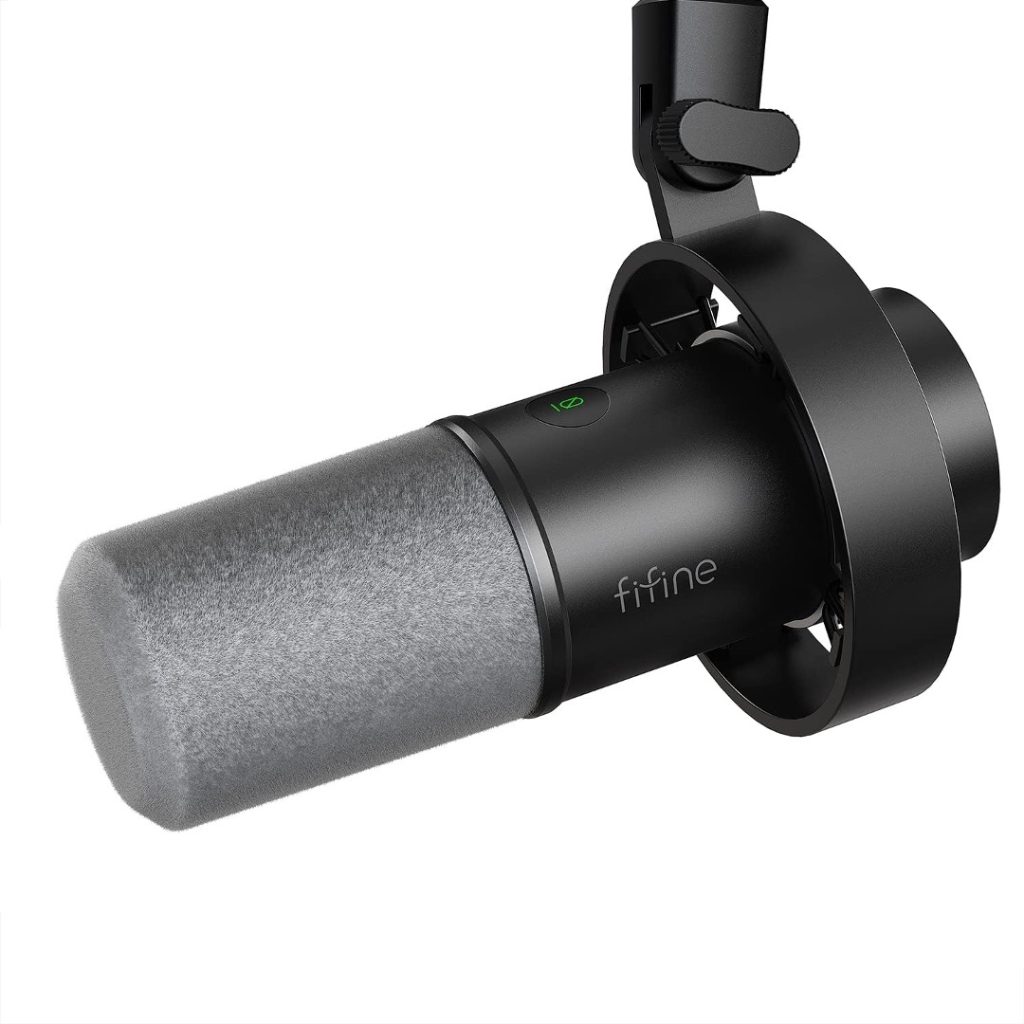
A very good microphone for podcasting and streaming at home…
The FIFINE Amplitank K688 is a dynamic microphone featuring a cardioid polar pattern. Its frequency response ranges from 70Hz to 15kHz, and it has a sensitivity of -58dB. The maximum sound pressure level (SPL) it can handle is 130dB. These specifications suggest that the K688 is well-suited for handling a wide range of vocal types without distortion, especially in a home recording environment. The microphone supports both XLR and USB connectivity, providing flexibility in setup. The USB interface operates at a sample rate of 16-bit/44.1k-48kHz, which is adequate for most home recording needs.
The FIFINE K688 is known as a work-horse when it comes to recording podcasts or live streams and it delivers really nice and engaging vocals. When it comes to sound performance, the K688 delivers a balanced sound profile, with a slight emphasis on the lower frequencies. This can result in a richer, bass-heavy vocal tone, which might be desirable for certain styles of voice work or music (especially for podcasts). However, the high gain on the 3.5mm audio jack which is used for real-time monitoring might introduce some static noise – this is something you may need to think about when recording with this dynamic microphone.
I like the K688’s dual XLR and USB connectivity which provides a nice advantage over models that offer only one type of connection. For instance, microphones like the Shure MV7 also offer XLR and USB connections but at a higher price point. The K688 stands out for its combination of robust build quality, versatile connectivity options, and really crisp sound performance which can make your voice sound deep and engaging.
I would recommend the FIFINE K688for home recording because it is simple to use – it has dual connection options which make it compatible with a wide range of recording setups, from simple USB-based home studios to more advanced setups incorporating XLR connections. The cardioid pattern effectively minimizes background noise, making it suitable for less-than-ideal recording environments commonly found in home studios. Additionally, the microphone’s on-mic controls for gain and mute, along with real-time monitoring capabilities, make it a versatile microphone for podcasts and streaming.
#3 Shure SM7B Dynamic Microphone
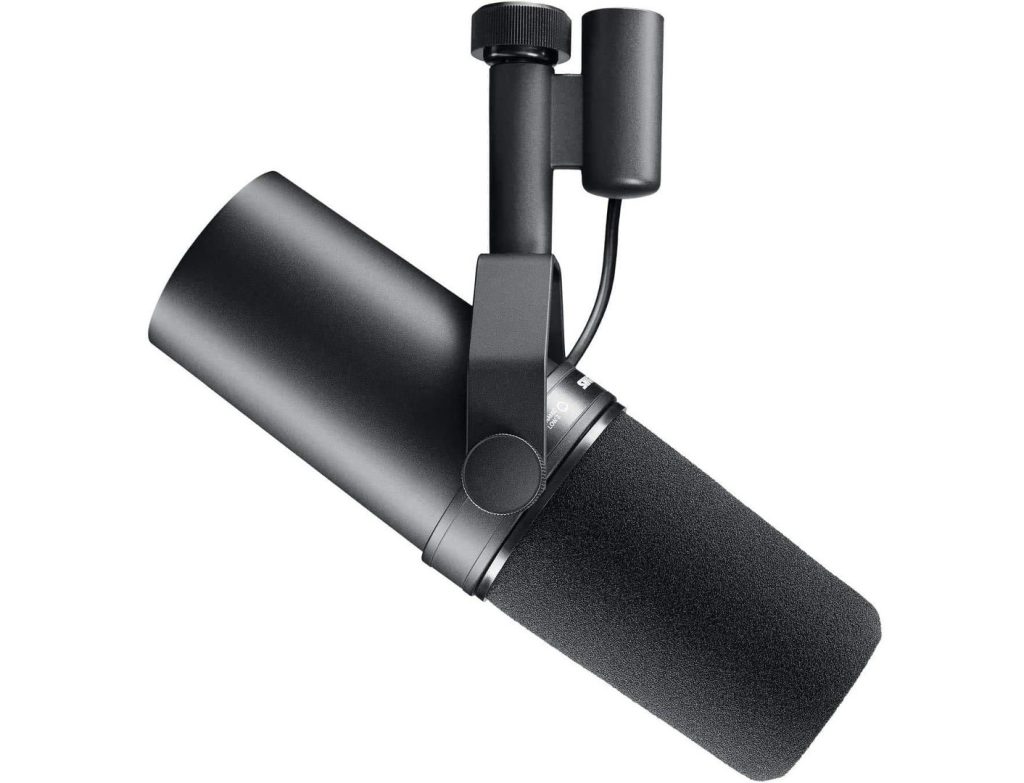
An industry favorite for recording vocals and podcasts…
The Shure SM7B Dynamic Vocal Microphone is probably one of the most popular microphones in the recording industry, and is the go to microphone for studio recording, home recording, podcasting, streaming, and even in live settings. This microphone is a dynamic studio microphone with a cardioid polar pattern and is specifically designed to capture sound unidirectionally, primarily from the front. It operates with a frequency range of 50 Hz to 20 kHz, which contributes to its ability to produce a natural and transparent audio output. Additionally, it features options for bass roll-off and presence boost, allowing you to tailor the sound profile according to your preference.
In terms of sound performance, the SM7B delivers smooth and warm output and is particularly designed for clear speech and vocal recording. Its large diaphragm and housing are engineered to extend the low-end and provide a wide frequency response. The microphone offers three frequency response settings: presence boost, flat, and bass roll-off, further enhancing its adaptability to different recording situations. The presence boost setting, in particular, adds a distinct character to mid-range frequencies, making it a preferred choice for recording instruments like guitar amps.
The SM7B is often compared to the Rode NT1 when it comes to studio recording and sound quality. The Rode NT1 delivers a wider frequency spectrum and better high-end capture, making it more suitable for situations requiring brighter sound. In contrast, the SM7B’s frequency response and particularly its pronounced mid-range, is more suited for capturing “in your face” type of lead vocals and for miking electric guitar and bass amplifiers. This means that the SM7B’s voice recordings sound more natural and dynamic, making them great for engaging podcasts and live streams.
Overall, the Shure SM7B is one of the best microphones for recording vocals at home due to its superior sound quality and its additional features like electromagnetic shielding and its internal shock isolation that reduces mechanical noise. Its robust construction, including a detachable close-talk windscreen and a yoke mount that accommodates various types of boom arms makes it a very versatile microphone for home studio recording. If you are looking for something better than the Shure SM58-LC microphone, the SM7B is the microphone you should get.
#4 Audio-Technica AT2020 Condenser Microphone
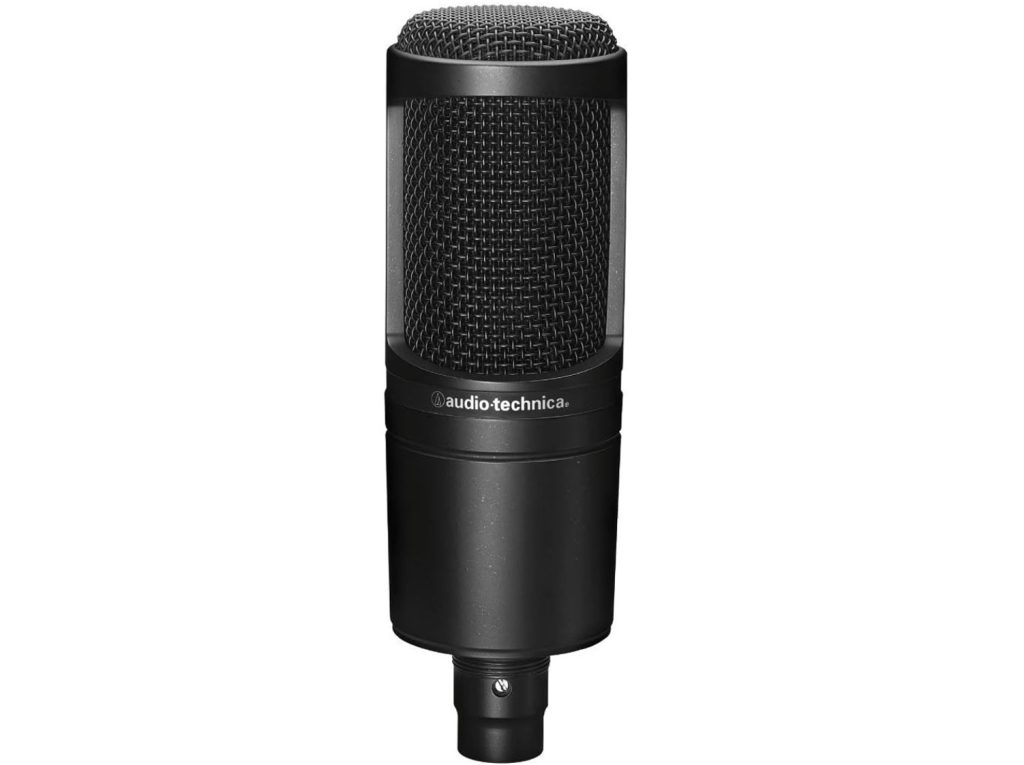
If you are looking to record better quality and more engaging vocals…
Now I don’t generally recommend condenser mics, but if you are considering getting a budget condenser microphone for your home studio and have proper acoustic treatment, the Audio-Technica AT2020 is a really nice option to get. I wouldn’t recommend this microphone for beginners as it can get quite sensitive when it comes to picking up surrounding acoustics, however it sounds really good if you have a quiet room with nice acoustics as it can make your voice sound more deep and engaging.
The Audio-Technica AT2020 comes with a sturdy cast metal body and a durable wire mesh that safeguards the capsule, enabling it to endure high SPL handling and a wide dynamic range. Additionally, a secondary layer of finer mesh is incorporated to minimize popping sounds, commonly known as plosives; however, it is advisable to use an external pop shield when recording vocals. The microphone’s open-circuit sensitivity is 14.1mV/Pa, and it has a slightly higher-than-average noise figure at 20dB. Its maximum sound pressure level (SPL) is 144dBSPL at 1kHz for 1% THD, allowing it to be used for close-miking if required.
In terms of sound performance, the AT2020 delivers crystal clear vocals that sound warm and engaging, and it can make your vocals sound silky smooth with its level of clarity. It provides lower mid-range warmth that flatters most singers, along with a subtle presence peak for added clarity and airiness, without inducing sibilance or harshness. The microphone’s balanced sound makes it versatile across different voices and instruments. Its off-axis characteristics are also pretty decent with excellent rear-axis rejection and good rejection of sounds from 90 degrees off-axis, which is beneficial in studio environments where computer noise can be an issue.
Compared with the Shure SM58-LC microphone, the AT2020 microphone is more adapt at capturing the subtle nuances and tones in your vocals. This makes the AT2020 better suited for high quality vocal recordings and singing at home (it can also capture the warmth of instruments such as acoustic guitar with good depth). The Shure SM58, being rugged and versatile, is better if you are recording in a noisy environment as it does not have as much pick-up as the AT2020 microphone.
Overall, the AT2020 is a really good budget condenser for recording vocals at home due to its robust build, balanced sound on vocals and instruments, and its capability to handle a wide dynamic range. While its slightly higher noise level may not be ideal for every situation, it generally isn’t a concern in typical home studio applications especially when close-miking. The microphone’s ability to deliver professional results in various miking scenarios makes it a strong contender for those seeking quality and versatility in a home recording environment.
#5 Shure MV7 USB/XLR Dynamic Microphone
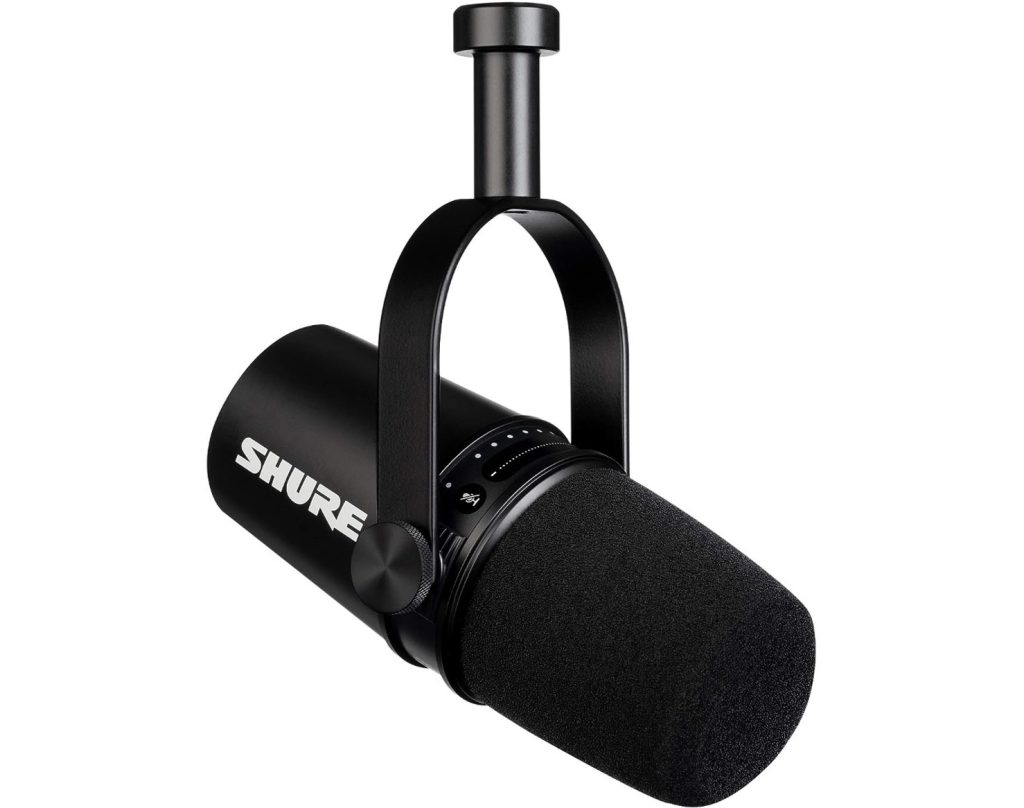
Hands down the most versatile mic for podcasting or recording vocals at home
The Shure MV7 USB Microphone is hands down one of the most versatile microphones for recording vocals at home and it features dual USB/XLR output options for digital or analog recording. It is designed for podcasting, recording, live streaming, and more, offering intuitive touch panel controls for easy adjustment of gain, monitoring volume and mic muting (this makes it very convenient to use while podcasting). The microphone’s built-in headphone output allows for direct monitoring while recording and provides enhanced control over the recording process. Additionally, its rugged all-metal construction makes it a really reliable and durable microphone to use at home.
In terms of sound performance, the Shure MV7 excels in providing rich and natural vocal reproduction with an optimized frequency response. Its dynamic recording cartridge features a cardioid pickup pattern that isolates the voice effectively while minimizing off-axis sounds. The microphone’s ability to handle various recording situations without internal damage makes it a reliable choice for content creators as it can capture the subtle details and nuances in your voice. The MV7 also provides adjustable frequency responses through the ShurePlus MOTIV app, allowing you to customize their sound preferences easily.
When compared to other podcasting microphones like the Shure SM7B, the Shure MV7 stands out for its dual XLR/USB output functionality and simplified recording process. While both microphones deliver exceptional speech performance typical of Shure products, the MV7 offers additional features like touch panel controls and real-time tone correction through its app. The MV7’s versatility in functioning directly with computers without the need for a separate mixer or audio interface makes it a practical choice for home recording setups.
Overall, the Shure MV7’s is one of the best microphones you can get for recording vocals at home, and is considered is one of the industry favorties due to its engaging voice pickup and silky smooth highs. If you are looking to get a microphone that is better than the Shure SM58-LCs to improve the quality of your vocal recordings, the Shure MV7 is definitely a microphone you should consider.
#6 Rode PodMic Cardioid Dynamic Microphone
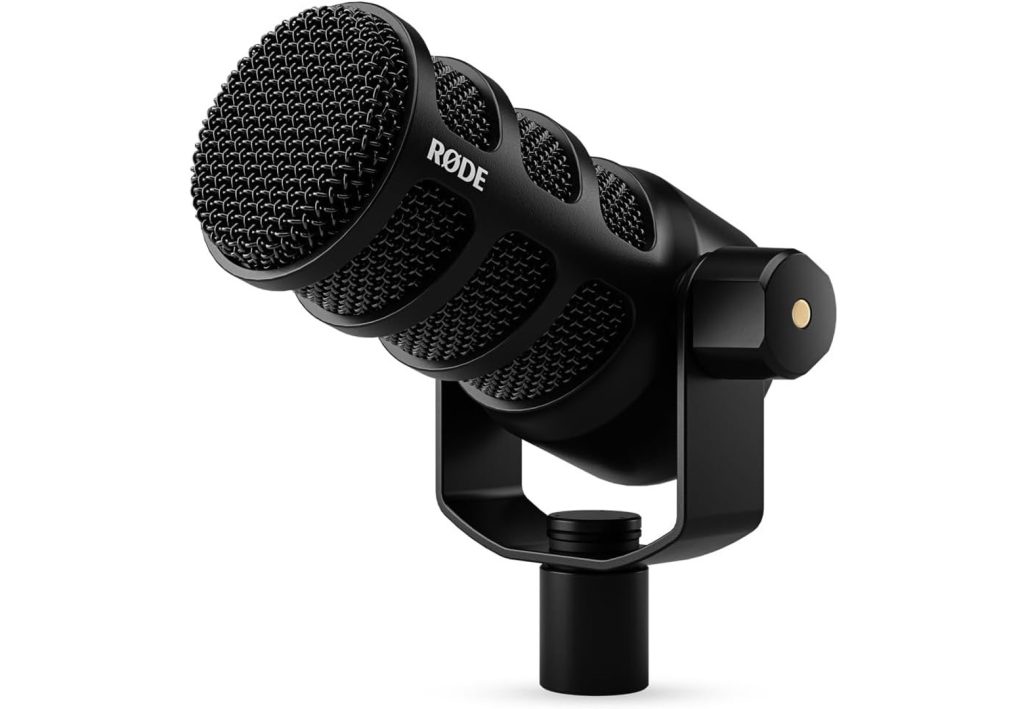
Considered one of the best microphones for podcasting…
The Rode PodMic still remains as one of the most popular dynamic microphones to record vocals at home and delivers a rich and balanced sound profile optimized for professional audio production. It comes with an internal pop filter which effectively minimizes plosives, providing clear and crisp vocal recordings without the need for additional accessories. The microphone’s internal shock mounting system further reduces vibrations, enhancing overall sound quality and minimizing unwanted noise during recording sessions. The Rode PodMic is designed for easy integration with the RODECaster Pro podcast production studio which provides a tonne of easy customization features to make your vocals stand out.
In terms of sound performance, the Rode PodMic captures vocal performances with really nice clarity and detail, and it can make your voice sound crisp and engaging. Its cardioid polar pattern focuses on capturing sound from the front while effectively rejecting off-axis noise, making it an ideal choice for home recording studios where ambient noise can be a concern. With a frequency response range of 20Hz to 20kHz, this microphone offers a wide spectrum of audio capture, ensuring accurate and natural vocal reproduction suitable for various podcasting and vocal recording applications.
When compared to other podcasting microphones like the Shure SM7B or the Audio-Technica AT2020, the Rode PodMic sets itself apart for broadcast applications and its integrated features such as the pop filter and shock mounting system. While the Shure SM7B is versatile and delivers a flat frequency response, the PodMic has a more engaging sound signature with deeper and crisper vocals. It is generally an all-round podcasting microphone that works great for recording vocals at home, and I highly recommend this microphone if you want your vocals to sound more engaging.
Overall, I highly recommend the Rode PodMic for its exceptional build quality, tailored frequency response and user-friendly features. Whether you are a podcaster looking to elevate your audio production or a content creator aiming for clear and professional vocal recordings, the PodMic’s broadcast-quality sound reproduction makes it a really good choice even for beginners. The microphone is easy to setup and comes with all the software that you need to get started, and it is compatible with any microphone stand with a boom arm.
#7 MAONO PD400X Dynamic Microphone
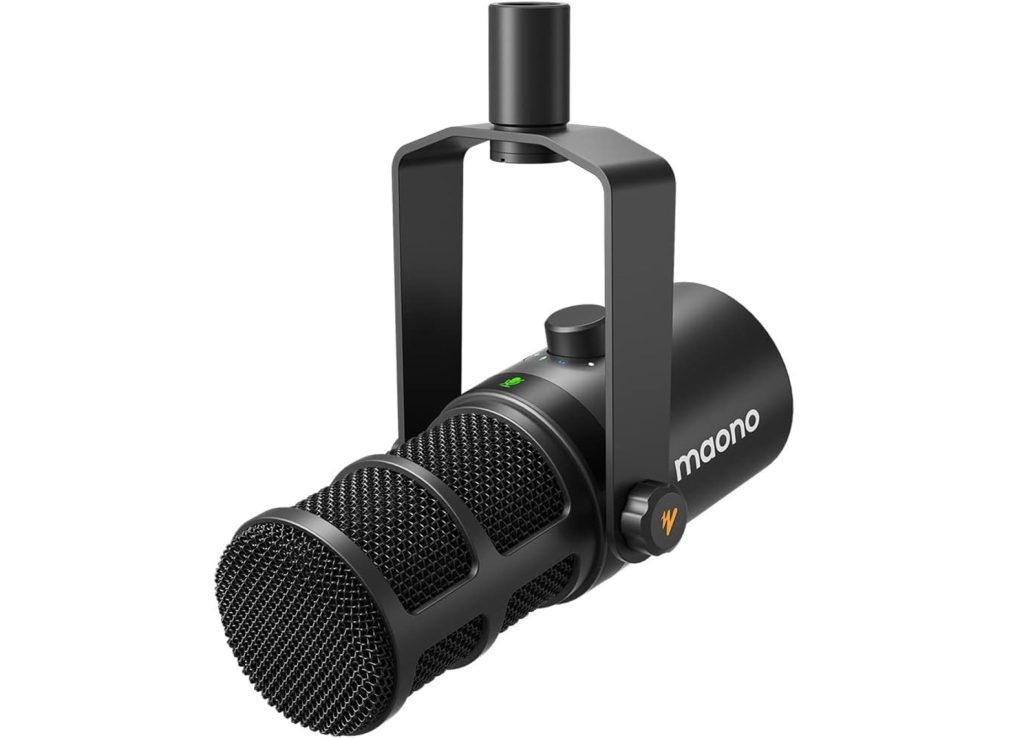
One of the best microphone with great build quality…
The MAONO PD400X Dynamic Microphone is an affordable option for those who want a very good dynamic microphone for singing or podcasting at home. The one thing I like about this microphone is its exceptional build quality – it features a premium dynamic capsule and a cardioid polar pattern that provides ultra-wide frequency response and accurate sound pickup regardless of your room environment. The microphone also comes with a unique 3-in-1 digital knob which allows for easy adjustment of mic gain, headphone volume, and monitor mix, with a touch mute key featuring an LED indicator for instant muting. This makes it very convenient for live recordings or podcasting.
In terms of sound performance, the MAONO PD400X delivers natural and detailed audio quality and effectively rejects room resonance and reflections. When compared to other podcasting microphones like the Shure SM7B (which is known for its clarity and flat response but at a higher price point) the MAONO PD400X stands out for its affordability with a really nice and sleek build quality. The microphone’s dual USB/XLR output also provides flexibility for direct connection to various devices and professional interfaces.
If you are looking for an affordable quality microphone, the MAONO PD400X comes highly recommended due to its solid construction quality and versatile connectivity options. With a frequency response range of 40Hz-16kHz, adjustable gain range of 0 to +42dB, and compatibility with various devices including computers, mixers, and audio interfaces, this microphone offers an accessible yet professional solution for achieving high-quality vocal recordings. Additionally, the Maono Link app enhances user control over EQ settings, compression, limiter functions and more, making it a highly versatile microphone with a full suite of control features.
#8 Elgato Wave DX Dynamic Microphone
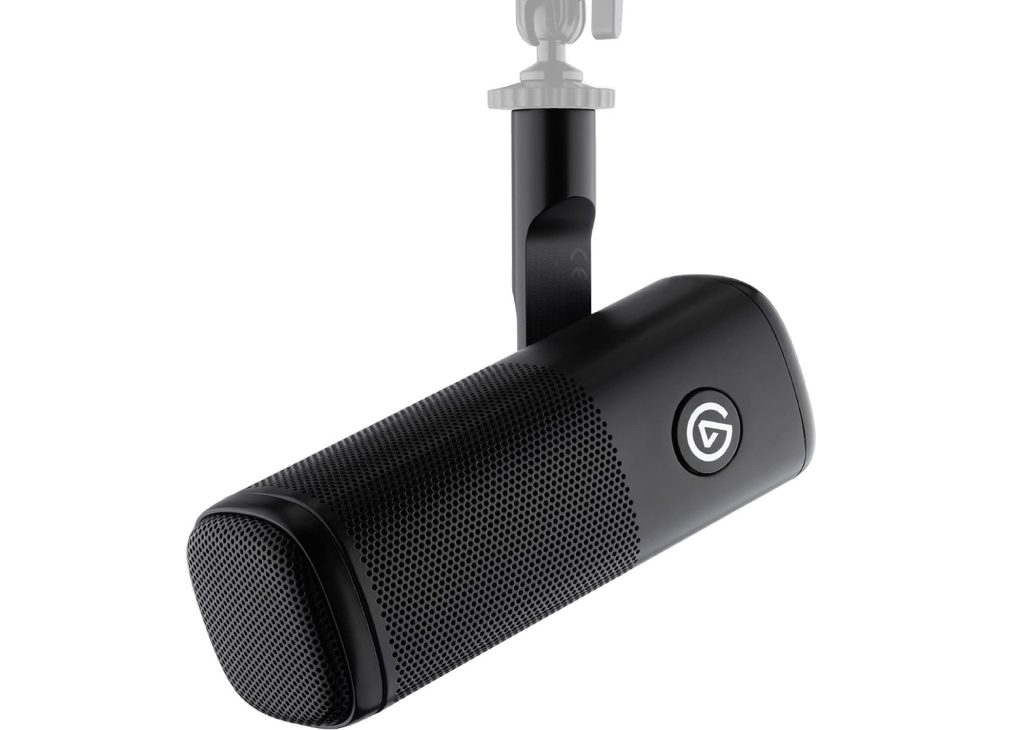
A superb dynamic mic for detail and warm sound signature…
The Elgato Wave DX is a premium dynamic microphone designed for home recording studios. It features a speech-optimized capsule that captures exceptional detail and clarity, delivering a warm, true-to-life sound character. This microphone has a cardioid polar pattern and provides a wide, forgiving acceptance angle for off-axis speaking. The microphone’s room noise rejection reduces unwanted background noise which is great for recording at home as it minimizes surround sound pickup. Additionally, the Elgato Wave DX works out of the box with any audio interface without the need for a signal booster which makes it very easy to use and setup.
In terms of sound performance, the Elgato Wave DX provides a full-bodied, broadcast-style sound signature. It excels in capturing vocals with richness and presence while maintaining natural tones. Compared to other podcasting microphones like the Shure SM7B or the Rode PodMic, the Wave DX stands out for its affordability and ability to deliver detailed treble and noise rejection typical of dynamic microphones. Its frequency response range of 50Hz to 15kHz complements vocal recordings with a crisp edge similar to higher-end microphones.
For recording vocals at home, the Elgato Wave DX is a great choice due to its exceptional sound quality and versatile features. I really like this microphone because it has a really nice build quality and it captures all the details in your voice with great clarity (it sounds almost identical to the Shure SM7B microphone straight out of the box). The microphone records clear vocals and reduces background noise without any degradation in the vocal recordings – they still sound crystal clear and very crisp.
The Elgato Wave DX’s compatibility with any XLR interface and the option to expand your setup with Elgato’s Wave XLR also makes this microphone great for those who want to upgrade their home recording studio in the future. It’s compatible with any XLR audio interface with no booster required and is an all-round very enjoyable microphone to record with.
#9 JBL PMB100 Dynamic Microphone
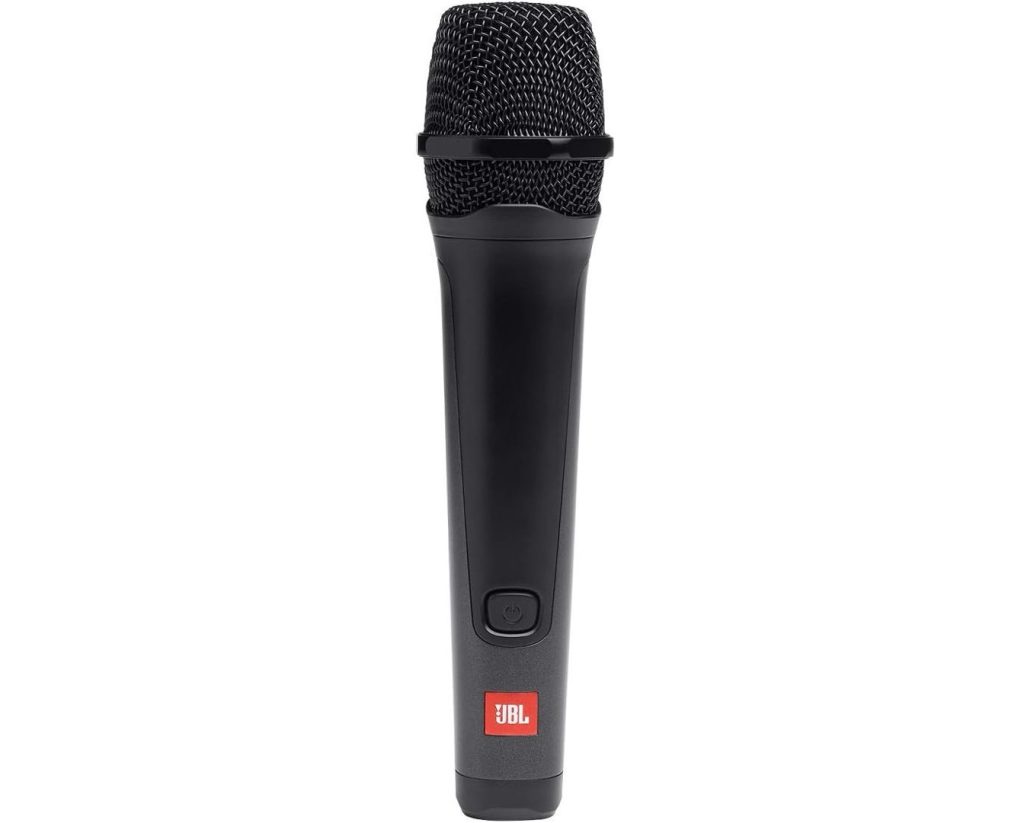
A simple and good quality alternative to the Shure SM58-LC…
The JBL PMB100 Dynamic Microphone is a really good budget microphone and a decent alternative to the Shure SM58-LC microphone. This microphone is very easy to use and is effectively plug and play – it features a cardioid polar pattern which effectively captures vocals while minimizing ambient noise, making it an ideal choice for recording vocals at home. The microphone also comes with a wire mesh cap with windscreen which suppresses windblasts and background noises which makes it a great microphone to use at home particularly if you have noisy surroundings.
In terms of sound performance, the JBL PMB100 delivers crystal-clear audio with impressive bass reproduction and crisp vocals. The wire mesh cap with windscreen effectively suppresses windblasts and background noise, allowing you to sing into the microphone while minimizing background noise pickup. The microphone’s 6.35mm Jack connector type and corded electric power source make it versatile and easy to integrate into various recording setups or audio interfaces.
When compared to other podcasting microphones like the Shure SM58 (which is known for its reliability and warm vocal reproduction) the JBL PMB100 stands out for its sleek design and durable construction. While the Shure SM58 offers a proven track record in live sound applications, the JBL PMB100 is a more affordable option for vocal recordings at home and it has a pretty similar sound signature of the Shure SM58-LC microphones. I do find that the JBL PMB100 delivers crystal clear audio and delivers really little distortion at loud volume levels.
Overall, the JBL PMB100 Dynamic Microphone is an easy-to-use plug-and-play microphone that is similar to the Shure SM58-LC in terms of sound quality. It is affordable and easy to use and start recording.
#10 Samson Q2U USB/XLR Dynamic Microphone
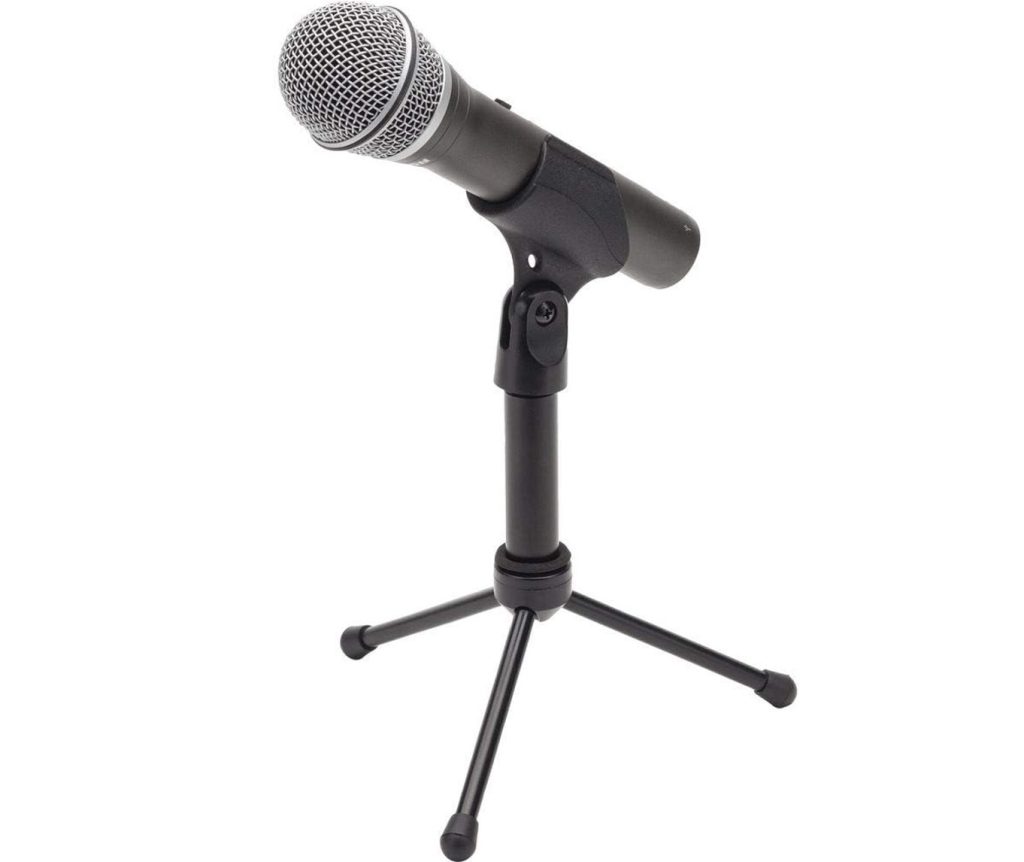
A trusty microphone that has been around for a long time…
The Samson Q2U USB/XLR Dynamic Microphone is a versatile and user-friendly option designed for a range of recording applications including podcasting and music production. This microphone is very easy to setup and it delivers professional sounding recordings that sound crisp and super clear – they are roughly similar to the Shure SM58-LCs but are more affordable. Its compatibility with both USB and XLR cables also provides flexibility in connectivity options (it comes with both USB and XLR cables), allowing for seamless integration with your PC or audio interface. Like most dynamic microphones, the Samson Q2U has a cardioid polar pattern which rejects off-axis sounds and is great for recording at home with minimal interference.
In terms of sound performance, the Samson Q2U delivers high-quality audio reproduction with a focus on clarity and detail. The cardioid polar pattern enhances vocal recordings by isolating the desired sound source while reducing unwanted background noise and it delivers professional-grade recordings suitable for podcasts or music production. When compared to similar podcasting microphones like the Audio-Technica ATR2100x, the Samson Q2U stands out for its warm and resonant sound character. While the ATR2100x offers a USB-C output for faster charging and modern connectivity, the Q2U’s micro USB connection remains reliable and functional for most recording setups.
I really like the fact that the Samson Q2U comes with included accessories such as a mic clip, windscreen, XLR cable and USB cable which makes it very easy to setup. The microphone is highly versatile and can be connected directly to your PC via USB or to your audio interface if you prefer XLR. The microphone also features a 3.5mm headphone output for studio monitoring which is a really nice added touch. The fact that this microphone comes with all these features and accessories at such an affordable price point makes it a very good option especially for beginners.
The Samson Q2U has been around for a long time and from my own experience working with this microphone, I did find that it delivers crisper sound and reduces all background noises when compared to other dynamics including the Shure SM58-LC. It is a very versatile and low-budget microphone, and for the sound quality it is definitely worth checking out especially if you are setting up your home recording studio on a budget.
Next Steps
For a complete tutorial on how to set up your home recording studio, read our guides starting on how to choose a proper studio room for home recording to getting the right equipment and applying acoustic treatment. These guides will help you to save time and cost when setting up a home recording studio and allow you to start recording right away:
